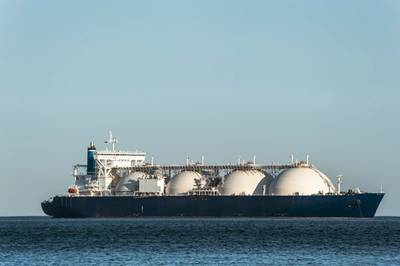Canada Sees West Coast LNG Revival as World Scrambles for Gas
Canada is taking a second crack at developing a liquefied natural gas (LNG) export industry on its west coast a decade after soaring costs and indigenous opposition derailed a previous wave of proposed LNG terminals.
This time, companies are focusing on smaller west coast projects they bet will be cheaper and faster to build.
"Smaller project are easier to manage, especially in Canada," Enbridge chief executive Al Monaco told Reuters in an interview. "The need for global LNG is clearer now than it was before, we're getting a second chance and I hope we don't blow it this time. We've got to get on it right away."
Environmental and regulatory hurdles to pipeline construction have discouraged new LNG terminals on Canada's Atlantic coast. Read full story British Columbia's Pacific coast is close to Canada's vast Montney shale field and Asian markets, where LNG prices hit a record high last week.
Privately owned Port Edward LNG is raising capital and negotiating off-take agreements with Asian buyers, a Shell-led consortium is studying the feasibility of building Phase 2 of the LNG Canada project and last month Enbridge Inc outlined a C$1.5 billion investment in Pacific Energy Corp's Woodfibre LNG project.
Woodfibre will start construction in 2023 and the 14 million tonne per annum (mtpa) LNG Canada project in Kitimat is under construction and expected in service in 2025. They are the only two out of 18 proposed projects to get underway.
Building a large LNG terminal in B.C. costs roughly double what it does on the U.S. Gulf Coast, The trend, with the exception of LNG Canada, is for much smaller plants.
Streamlined process
Developers, keen to avoid past mistakes, are securing support from indigenous people early, said Karen Ogen-Toews, CEO of the First Nations LNG Alliance. Companies are also modifying existing infrastructure to avoid lengthy regulatory delays.
"That is one major difference, the scale of these new LNG projects versus the old ones," said Wood Mackenzie analyst Dulles Wang. "Producers and developers are conscious of the financial risk associated with larger projects."
Woodfibre LNG will be a 2.1 mtpa project built on a disused pulp mill site near Squamish. Port Edward LNG in northern B.C. will ship just 300,000 tonnes per annum using an existing dock and gas pipelines, and has engaged investment bankers in Houston and London to raise C$350 million in financing.
"There's no question this is a more streamlined process," Port Edward LNG President Chris Hilliard said. "By not using the conventional LNG approach we're able to leverage considerable existing infrastructure."
Exporting from the west coast opens access to world markets to landlocked Canadian gas producers. But the window to build new terminals is narrow. With the world targeting net-zero carbon emissions by 2050, a report by the International Institute for Sustainable Development warned that Canadian LNG terminals could become stranded assets.
Project economics could be reconfigured to provide faster returns on capital, or terminals could one day be converted to export hydrogen, Federal Natural Resources Minister Jonathan Wilkinson said.
"I think everybody's trying to get their heads around exactly how that would work," he told Reuters.
(Reuters - Additional reporting by Steve Scherer; Editing by David Gregorio)














